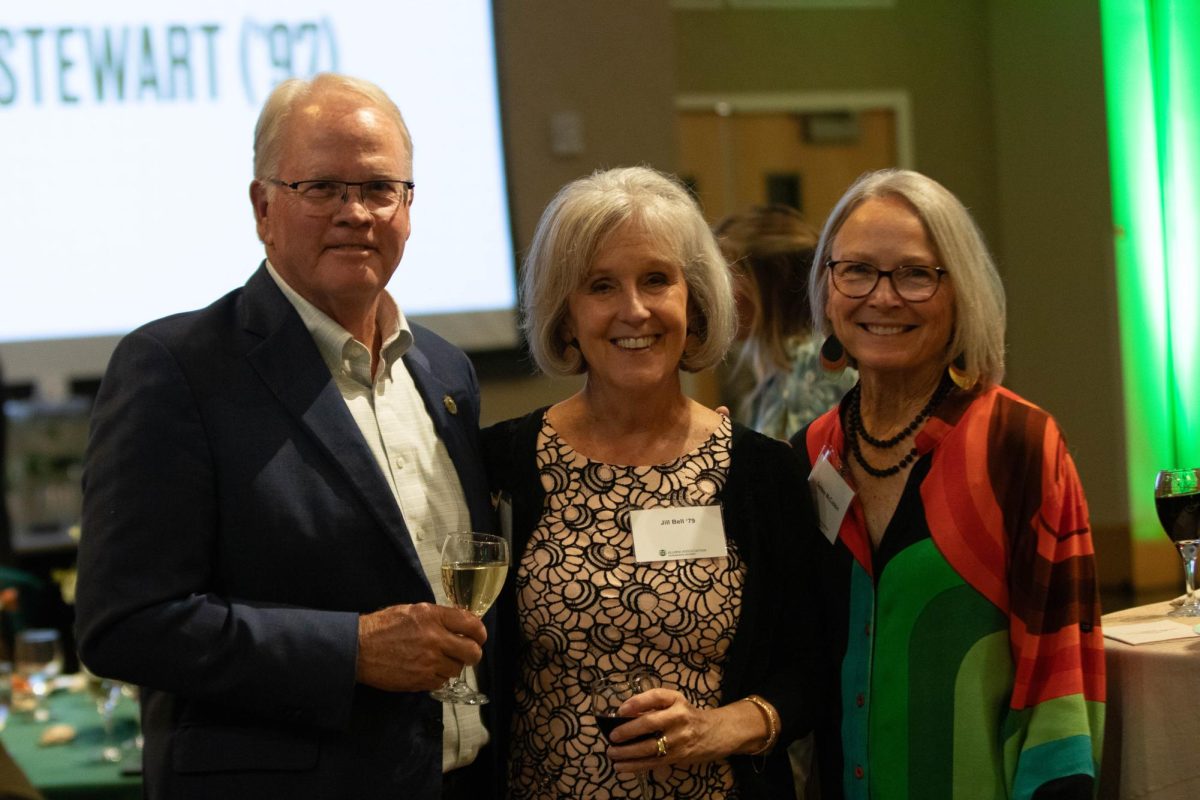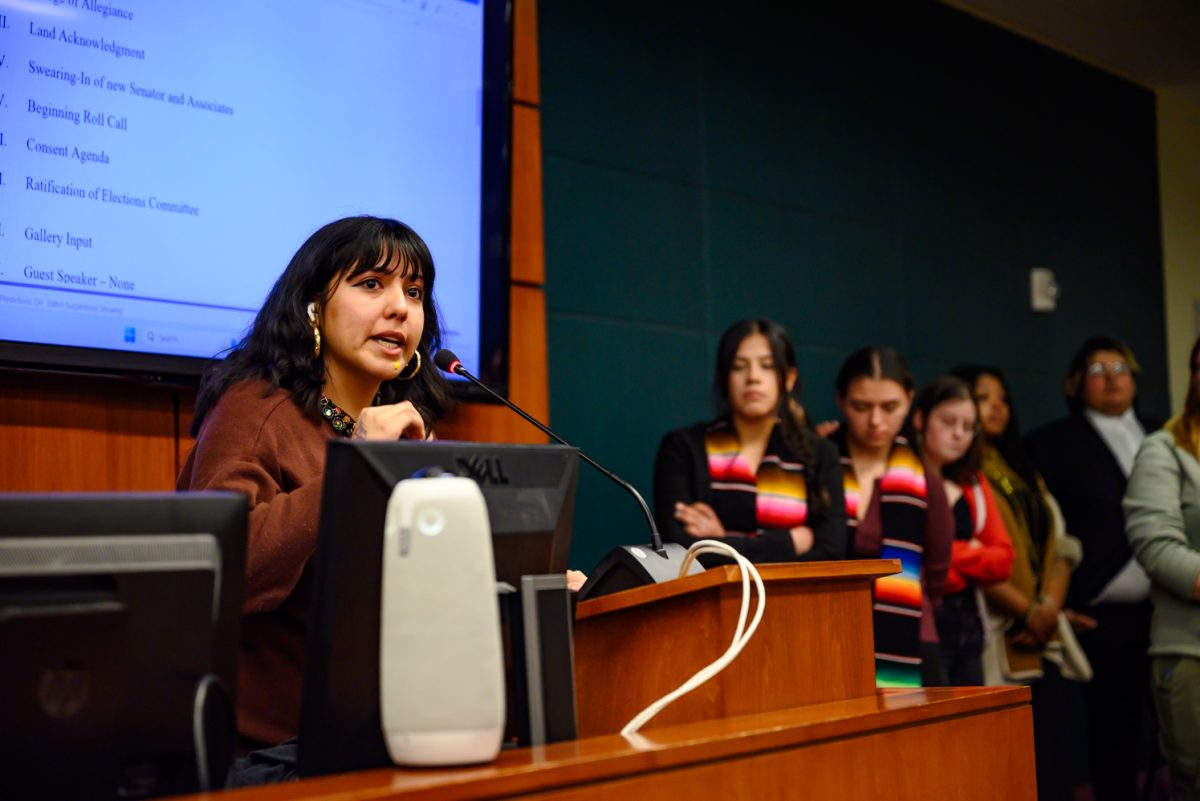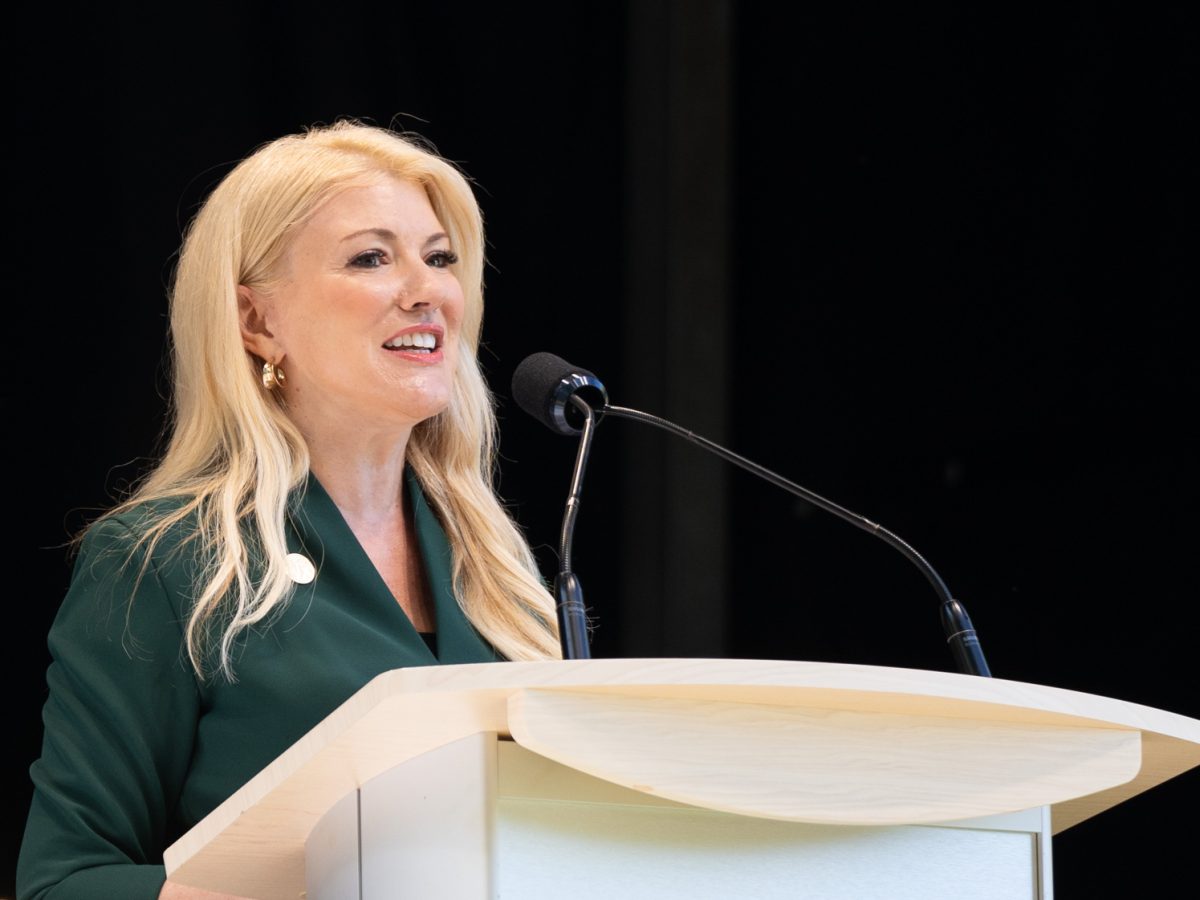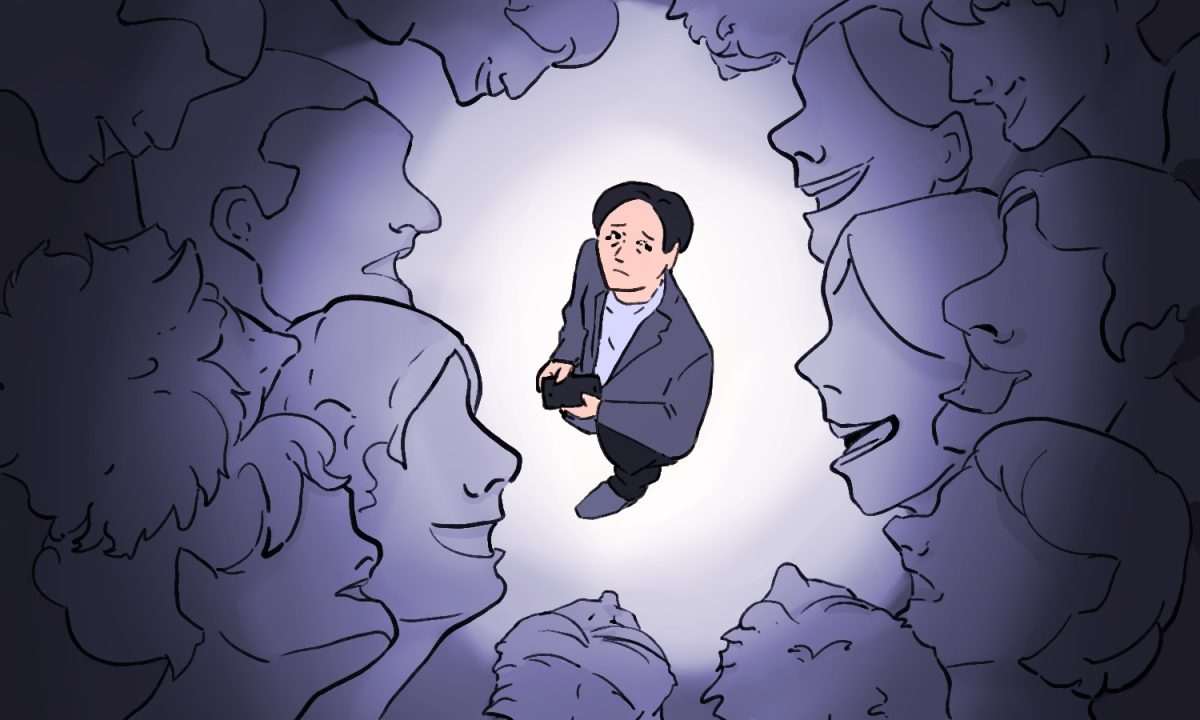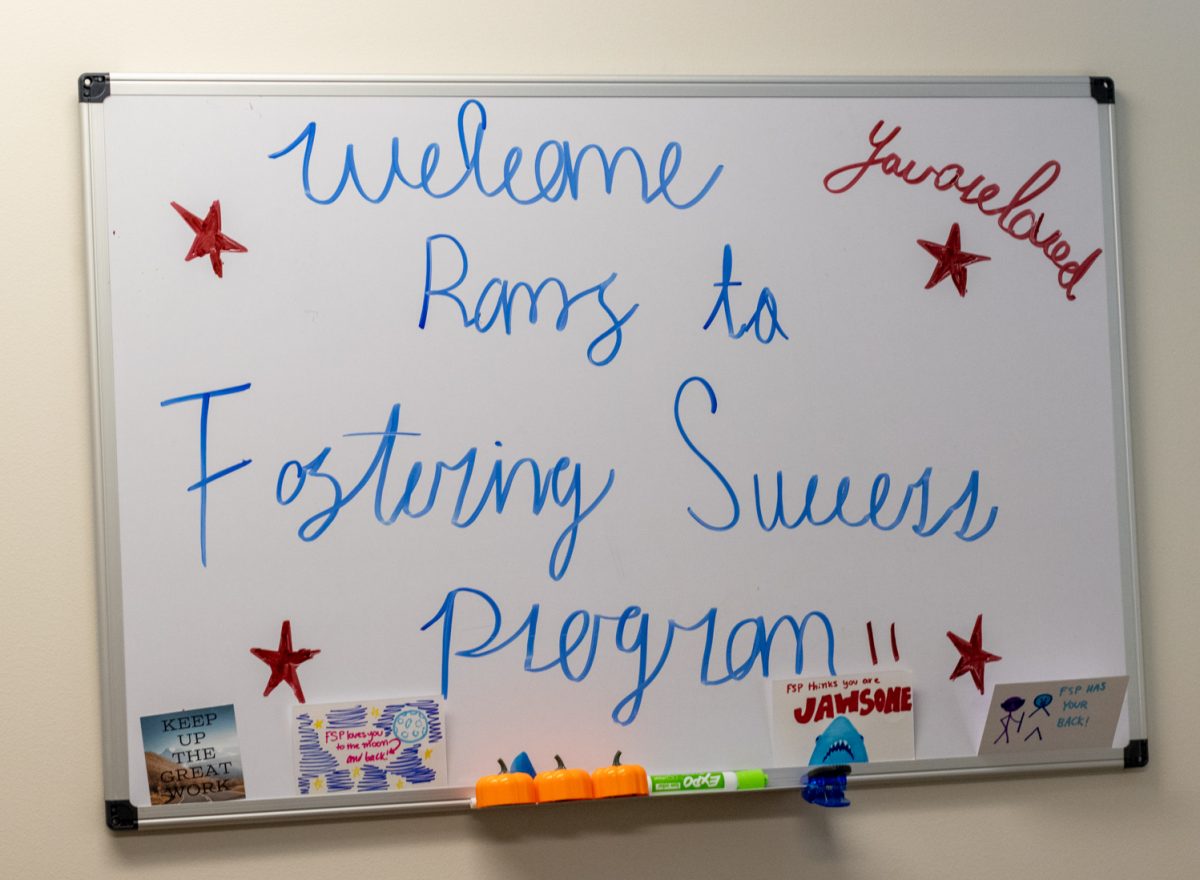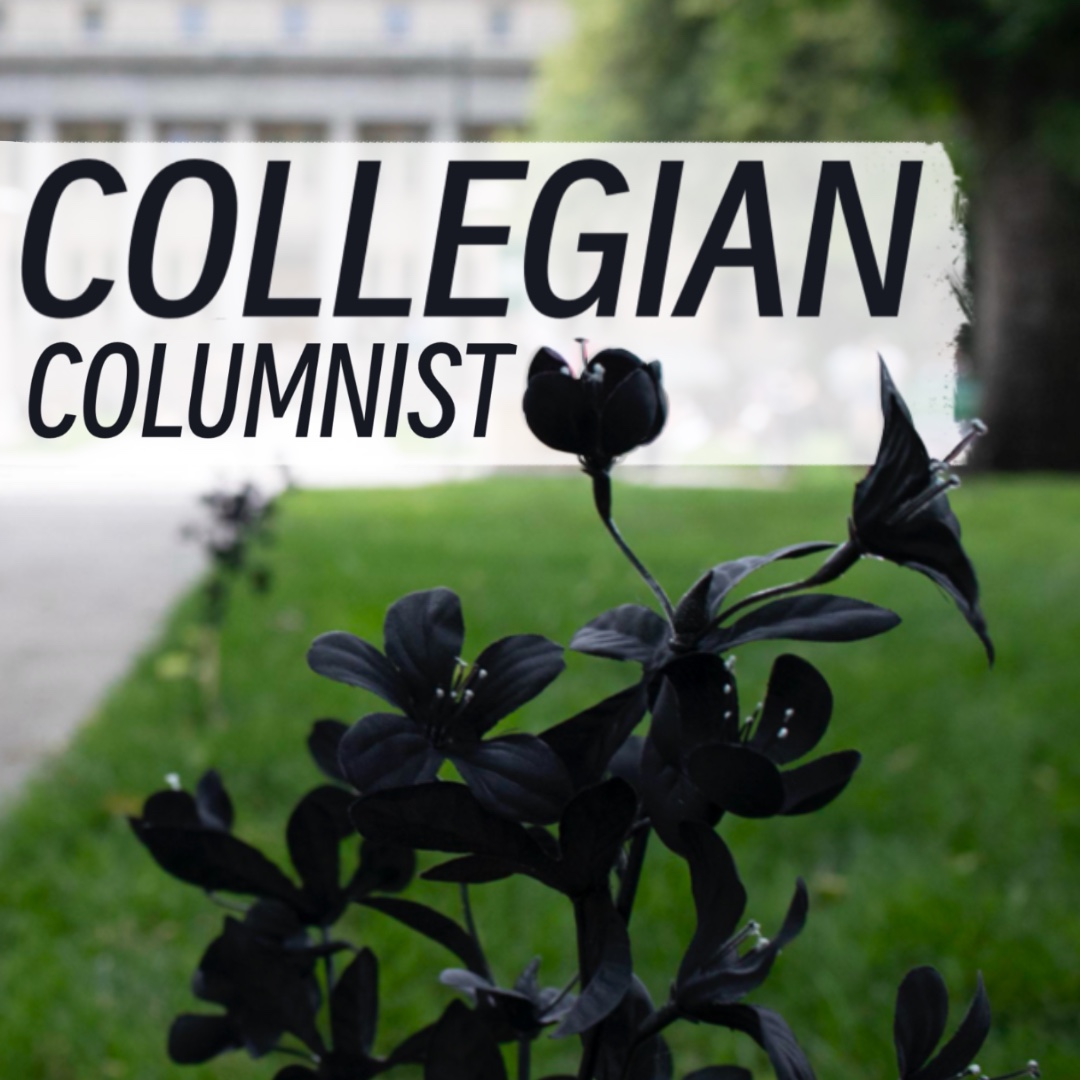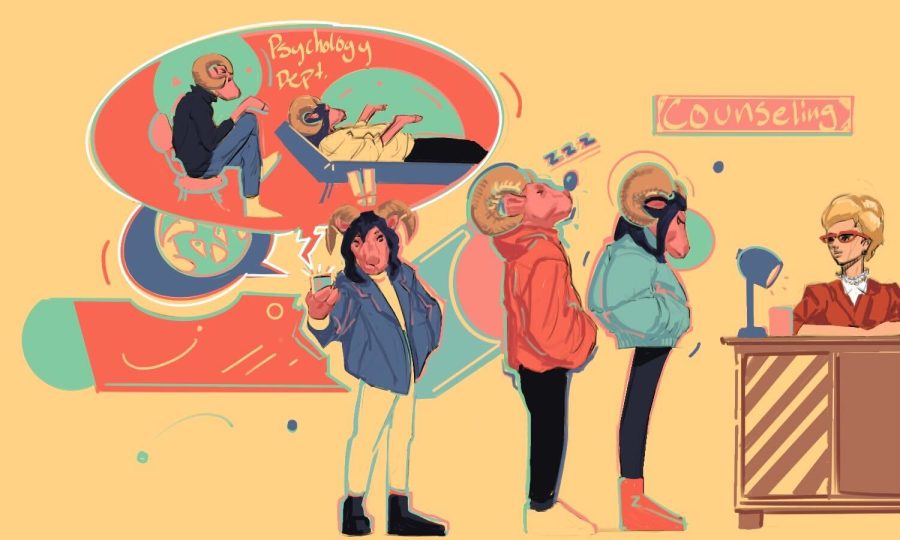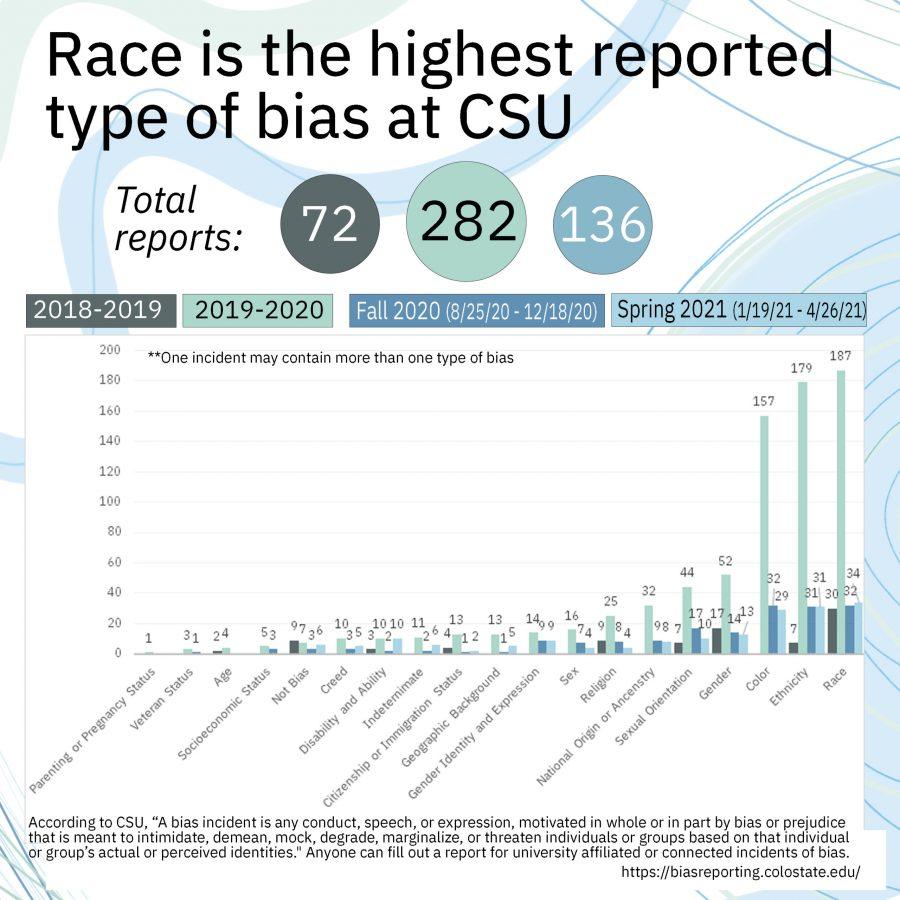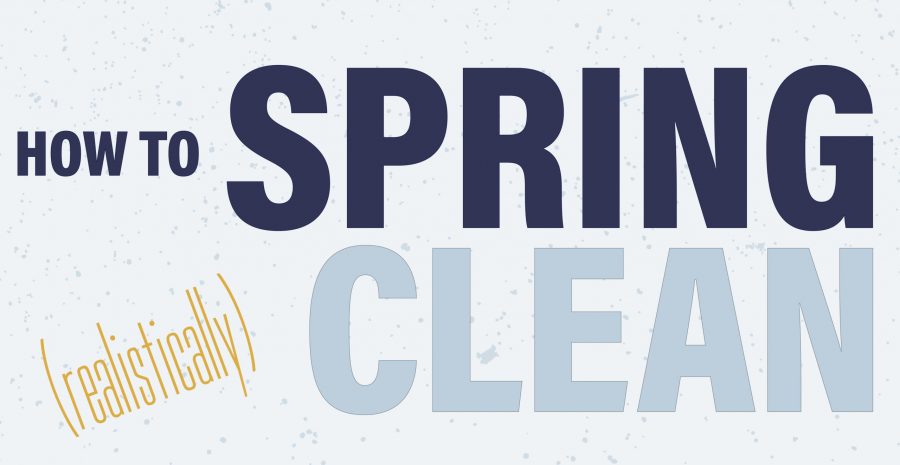This article was written in collaboration with The Colorado Sun and will be published on both The Collegian’s website as well as The Sun’s. Check out the story on The Colorado Sun website here.
A noose, crudely fashioned from crepe paper, dangled in the soft glow of the fluorescent lights outside of a Black student’s dorm hall; a possible sign of things to come.
A year later, a nervous parent called the police on two Native American students during a campus tour, inadvertently sending them away from a possible college career at Colorado State University.
The next year, a swastika appeared, spray-painted on the brick wall of a campus apartment building.
During the same month, a photo of students in blackface circulated on campus, stirring the student body and setting off a cry for the administration to do more to combat these types of incidents.
CSU saw a threefold increase in reports of bias in the fall of 2019 compared to the fall of 2018, part of a rising trend on college campuses across the country.
But numbers alone don’t tell the whole story. In fact, they raise more questions. Is there actually more hate on campus? Or is there greater awareness of racially motivated incidents and a greater willingness by students and others to report those incidents? Or is it a combination of factors? And when does an incident rise to the level of a crime?

Students, administrators and others are struggling to find answers, but some things are known already: In the past four years, CSU has seen a slew of high-profile racially motivated incidents that made headlines on campus, in the state and nationally, and they led to some students saying they no longer feel welcome or safe. The University began tracking such complaints only recently, separate from incidents that were classified as hate crimes.
As frustration and exhaustion on campus grows, The Collegian wanted to dive deeper into the issues surrounding bias and hate.
But to look at this story of racist photos, graffiti and more, we must take apart the tapestry woven within the CSU campus. We must look at what has changed, what has slid by and the plans for the future to really understand what race and belief mean on the CSU campus and throughout the country.
Sometimes, when you want to understand the bigger picture, you have to take a step back.
“It has gotten worse, especially in the last couple of years.”

A national report by the Leadership, Equity, Access and Diversity Fund found that roughly 67% of people participating in their study saw racially biased incidents happen at their university within the past two years. Roughly 43% of the respondents said bias incidents have happened more than once, as CSU saw in the fall of 2019.
A mix of universities across the nation have seen this trend of racially motivated incidents gaining more coverage.
At the University of Colorado Boulder, a woman was recorded calling Black students the N-word in a study room. The University of Nevada has seen a number of swastikas drawn across campus. Widespread racist and hateful comments have been posted around Syracuse University.
These incidents are often brushed aside by some as isolated moments of hatred. But they have garnered the attention of student organizations, local activists, university administrators and the national news media.
That is something that is disturbing, of course, that the racial component has not improved by any measure. It has gotten worse, especially in the last couple of years.” -Bridgette Johnson, director of CSU’s Black/African American Cultural Center.
Bridgette Johnson, the director of CSU’s Black/African American Cultural Center, said that over the nine years she has been here, she has seen a disturbing increase in the number of incidents reported on campus, especially recently.
“While there has always been some type of complaint coming from students about the climate here at CSU as it pertains to race, over the last four to five years I hear (it) more often,” Johnson said.
She said while much of the behavior continues to be passive, there is still a good deal of more outright and intense behavior that deeply affects students.
“That is something that is disturbing, of course, that the racial component has not improved by any measure,” Johnson said. “It has gotten worse, especially in the last couple of years.”
“Each semester, at least once a semester, it is always something.”
Students have picked up on these trends, especially those who have been at CSU for multiple years. Julius Philpot, a recent alumnus, only needed one word to describe racially charged incidents: consistent.
“As far as the consistency of the incidences actually occurring, they are still happening,” Philpot said. “And I think it will continue to happen because everyone has the mindset of ‘Oh, I’m not wrong’ or ‘Oh, it’s not me’ or ‘I have somebody who is of color saying that it is OK or doesn’t say anything at all.’”
“We walk around with the hashtag of ‘Proud To Be,’ but what are we proud to be of?” Philpot said.
This consistency is a sentiment shared among many of the students at CSU who experience and are affected by incidents of bias.
“When I transferred I was pretty shocked,” said Jessica Mitchell, a senior hospitality management student at CSU. “When I was talking to everyone up here, I was like, ‘Oh, that stuff happens at CSU?’ I had never experienced anything like it.”
“I feel like each semester, at least once a semester, it is always something,” said fifth-year health and exercise science major Ahonsi Ohimai. “That has always been the trend (in) my time here.”
A good deal of frustration around many of the incidents this year and in years prior has come down to University and University police responses. But responding to incidents is not a single-path process. Incidents are classified and handled through multiple channels, and they are broken down and investigated through a number of factors.
The first factor marks a key distinction in how hate gets defined on campus: hate crimes versus incidents of bias.
“Some incidents of bias that occur at CSU may be a hate crime if they meet the legal definition,” wrote Scott Harris, chief of the CSU Police Department, in an email to The Collegian. “However, many of the reported incidents of bias are not hate crimes; those incidents of bias are addressed by a group of University staff through a response that is separate from the criminal investigation of a hate crime that would be conducted by CSUPD.”

For something to be labeled as a hate crime, Harris explained, it must reach the threshold of being a crime. From there it must be determined if the perpetrator was “motivated by bias against a specific victim or victims,” with those victims targeted for their race, gender, sexual orientation and more.
A good example of this is graffiti or vandalism: a crime that can be seen as a hate crime but will be seen as just a normal crime if there is no specific individual or group targeted.
Using a recent example, the bloody N-word incident has not been categorized as a hate crime. According to CSUPD, the incident cannot be classified as a hate crime because it did not appear to target any individual or group of individuals associated specifically with the location where it was found since it was a public space.
Hate crimes on campus are investigated through a “fact-specific determination,” a conclusion made because of facts established by sufficient evidence, Harris wrote.
“This means that it is difficult to define the difference between an incident of bias and a hate crime without looking at the detailed facts of each incident,” he wrote.
We walk around with the hashtag of ‘Proud To Be,’ but what are we proud to be of?” -Julius Philpot, recent alumnus
In 2017 and 2018, only two hate crimes were reported — and there were none reported in 2016, according to CSU’s 2019 Clery Report, a required report detailing statistics on campus crime for the preceding three calendar years.
This leads to the question of where incidents of bias and complaints relating to bias go when many don’t qualify as a crime.
In the fall semester of 2018, when the University’s new bias reporting model was put into effect, there were 25 bias incidents reported, eight of which were entirely related to race. During the fall semester of 2019, there were 96 incidents — nearly a fourfold increase.

In all of 2019, the University received 153 incidents that were determined to be bias-related, with 56 being related solely to race, ethnicity or color.
“A huge slap in the face.”
After the photo of students in blackface became the talk of the CSU campus in the 2019 fall semester, President Joyce McConnell and her administration reacted fast to discuss what would happen. This came first in the form of an email and later spread to social media and discussions all across the University.

In her email sent to campus on Sept. 10, 2019, addressing the blackface incident, CSU President McConnell explained that personal social media accounts are not under the jurisdiction of the University.
“This recent post runs counter to our Principles of Community, but it does not violate any CSU rule or regulation, and the First Amendment prohibits the University from taking any punitive action against those in the photo,” McConnell wrote in the original email to the campus community.
McConnell, in a recent interview with The Collegian, explained that part of the problem is that while the University’s Principles of Community address incidents of bias and why they should be avoided, the Student Conduct Code does not specifically outline punishment for students who incite these incidents, something she wants to change.
Principles of community vs. Student Code of Conduct, according to University officials
- The Principles of Community reflect CSU’s “values and supports CSU’s mission and vision.”
- They are “an aspirational reflection of what we strive to be: a community that believes in inclusion, integrity, respect, service and social justice.”
- The Student Code of Conduct “defines conduct that is prohibited and outlines a process for disciplinary action for academic misconduct, abusive behavior, illegal behavior and other prohibited conduct.”
- Results of violations of the Student Code of Conduct fall in a range of outcomes, which are listed on page 11 of the code.
The University response prompted a lot of frustration and distrust from the campus community, particularly from students who were affected and offended by the blackface photo.
“I think that the very first email that we received from President McConnell was a huge slap in the face to a lot of students who were feeling bothered by the blackface situation,” Mitchell said. “I understand that it was the first situation that she had to deal with as president, but I think that the way everything was addressed was like, ‘We hear you, but we are also not going to do anything about it.’”
Mitchell added that she thinks that while the First Amendment is important, it is not something the University can always hide behind: a sentiment that is shared by many across the community.
This frustration led to a powerful outcry for change.
Philpot said that the reason this semester has seemed like one of the worst in terms of incidents of bias is simply that people are beginning to speak more publicly.
“The biggest portion of where it has changed is (that) it is being seen now,” Philpot said. “A lot of it was under wraps, or there were things covering it, so it wasn’t as open as it is happening now. Now, I’m sure every single incident somebody has said, ‘Hey, that’s not right,’ but to verbally step out and not be a bystander and watch it happen, for somebody to actually say it, we have gotten a little bit better as a University.”
When I transferred I was pretty shocked. When I was talking to everyone up here, I was like, ‘Oh, that stuff happens at CSU?’ I had never experienced anything like it.” -Jessica Mitchell, CSU senior hospitality management student
This was clear in much of the community’s response following the blackface incident during the fall 2019 semester. It was seen at the Associated Students of CSU session on Sept. 18, 2019, just more than a week after the blackface photo surfaced.
Hundreds of students, faculty, staff and community members packed the North Ballroom and an overflow room in the Lory Student Center to express their frustrations with the University and McConnell. As the room buzzed with emotion, the night saw tears, screams, threats of fistfights and emotions on a scale rarely seen at CSU: the culmination of all the frustration with a campus overwhelmed with bias-related incidents.
It was seen during the #NotProudToBe protest during McConnell’s Fall Address, where students marched in solidarity, moving between the sun and shadows of The Oval’s tall trees, to show their visible and meaningful frustration, something that McConnell described as the “best representation on any college campus in the United States of the exercise of First Amendment rights.”

“It is amazing for me; I think the response has been incredible,” said Blanche Hughes, vice president for Student Affairs. “As someone who has been here for 35 years and has always been, in some ways, involved in these efforts in whatever jobs I had here, I have never seen the response that we have gotten. That is what gives me hope.”
Johnson said the response during these incidents has shown the system of support that is around the students at CSU.
“I think it is a great reminder to students that they are not alone,” Johnson said. “That they have each other, that they have peers at other institutions, they have faculty and staff and administration here to support them, and they also have other folks in the community that are there to support them.”
“They deserve a place where there’s no question … whether they belong. Because they do.”
The events of the fall 2019 semester loudly called on the University for change. In response to the many bias incidents, the University discussed plans to address the issue.
During her 2019 Fall Address, McConnell unveiled the Race, Bias and Equity Initiative, a measure aimed to “implement actionable plans to address issues of race (and racism), bias and equity at CSU and to empower all members of our campus community to learn, work, live and recreate in a safe and welcoming environment,” according to the initiative website. Proposal ideas can be submitted on the site to suggest how the University can appropriately address issues of bias on campus.
“It was like drawing a line in the sand and saying, ‘This is intolerable; we are going to take a deep dive in a lot of the ways in which we do things on campus,’” McConnell said. “Because we want not only to provide access, (but) we want students to feel welcome and included so that they can be successful here. And that means all students.”
Even talking to some of my friends who are freshmen, they are letting me know that they are basically ready to transfer out of here after everything they experienced. I don’t want that to be the reality for any students of color who show up on campus.” -Ahonsi Ohimai, CSU fifth-year health and exercise science major
Hughes said she sees this initiative as an opportunity to change the way that incoming and current members of the CSU community view the institution. Hughes added that by gathering the voices of those affected on campus, the University can really institute change for years to come.
“We have to do a better job at hearing what the students, faculty and staff need to feel supported here and how can that help to improve our campus and move us forward,” Hughes said. “All of that is what I hope: personal change, … education and ultimately transformation so we truly do embrace diversity and inclusion.”
McConnell also introduced the notion of “courageous strategic transformation,” which she described as “not a traditional strategic plan, but a bold imperative.”
“We can choose to transform Colorado State University and … do so with the urgency that we know is warranted,” McConnell wrote in a preliminary email to The Collegian.
According to McConnell, such transformations include wanting every student in Colorado to see CSU as their first choice for college, as well as showcasing to Coloradans the role CSU plays “not just in the state, but in the world, in terms of education we offer, the outreach and partnerships to which we are committed and the world-class research that is transforming our world.”
“I want us to create a campus climate that allows our students, faculty and staff to truly thrive,” McConnell wrote. “Every single member of our community deserves to know that they are welcomed and valued for every aspect of their identity, race, gender, religion, ethnicity, immigrant status, socio-economic status, disability, age or veteran status. They deserve a place where there’s no question — theirs or anyone else’s — whether they belong. Because they do.”
Many students at CSU have publicly said there is still much more that needs to be done. And the big word being passed around is accountability.
Both Mitchell and Ohimai said the University ought to run an orientation session on race and bias as they do with topics like alcohol. And if there are students who are continuously part of bias-motivated incidents, Ohimai suggested they attend what he referred to as a “race and bias course.”

Johnson said she has seen a wide range of responses to these incidents, with some students saying it is time to stick together and stand up while others say they want to leave the University. She added, though, that it can be traumatic for students of color to walk on campus worried about what might happen.
“It’s simply not fair,” Johnson said.
Discussions about students wanting to leave the University have come up, and those discussions have played into how the community needs to change for future generations.
“Even talking to some of my friends who are freshmen, they are letting me know that they are basically ready to transfer out of here after everything they experienced,” Ohimai said. “I don’t want that to be the reality for any students of color who show up on campus.”
“But when it is really time to get down and dirty, where is everyone?”
The future of CSU isn’t set yet, as new students come in and new events unfold.
Philpot believes that for real change to happen, students will need to do some work and continue to have their voices heard.

“What I have seen here is people like to be a part of something when it is a trend; people want to be part of something,” Philpot said. “(When) we have newscasts come here and people want to publicize it, everyone is everywhere. At ASCSU, everyone wants to be there. But when it is really time to get down and dirty, where is everyone?”
Philpot added that one of the best ways to continue to combat incidents of bias and hatred on campus is to use the power students inherently hold.
“I really don’t think the students here understand the power that they have as to how quickly a change can come,” Philpot said. “And change hasn’t come yet because we aren’t utilizing that power effectively.”
Mitchell said that to move forward as a University, campus needs to be a more welcoming place.
“Obviously, we don’t live in a perfect world,” Mitchell said. “It is not just going to stop, but I think just getting to a point where these things start to decrease in a sense and just not make it feel like you stick out so much.”
Mitchell added that it can be commonplace for students of color to feel they stand out on campus while simultaneously not having their voices or thoughts heard.
However, Mitchell said a change in the structure of CSU is a good stepping stone moving forward.
“With President McConnell being the first female president, that is already a progressive step in the right direction,” Mitchell said. “I think that could be the first step in all of these next steps to make CSU a more welcoming place for all.”
McConnell said the response seen during the fall semester showcased one thing that she believes will be seen for years to come.
“When any community faces challenges like this, they actually have a choice,” McConnell said. “They can choose to unify against what violates the community’s values, or they can splinter. I think what is powerful about this community is it has made the decision to unify.”
I don’t have control over you and what you choose to do. What I have control over is how I respond to that, how I respond to you, how we try and engage in those conversations so I hopefully have the opportunity, if you’re that person with that hate, to examine why you have that hate and maybe change.” -Blanche Hughes, vice president for student affairs.
But the one thing that is common in many voices on campus is the necessity for understanding one another, an understanding that is productive and welcoming despite the differences in backgrounds.
For Philpot, that understanding needs to come from teachers and faculty on campus.
“(Teachers) have to be willing to adapt to what is coming because their generation is different than our generation,” Philpot said. “Everyone is different from a mindset, from a household, whatever it is. We are all very, very different, and that is going to have to start with you first getting here to this University.”
Another keyword in this discussion is listening, something that Hughes said is important for true inclusion.
“I don’t have control over you and what you choose to do,” Hughes said. “What I have control over is how I respond to that, how I respond to you, how we try and engage in those conversations so I hopefully have the opportunity, if you’re that person with that hate, to examine why you have that hate and maybe change.”
As many have said, the nature of these incidents and the University itself is ever-evolving. But the community plays a key role in improvement, and it is inclusion in the community that so many students, faculty, staff and administrators have pushed for.
Philpot said a good step forward is cementing expectations in the incoming students, the ones touring and going through the first steps of their college career.
“We have to find somewhere to cut it off and just say ‘All right, we gotta start fresh’ and help enforce the standards or the rules and what the expectations should have been (in) meeting those expectations, those things we are told are going to happen,” Philpot said. “Not painting something different. I am hoping the picture that is painted for them is the picture they see when they get here.”
Austin Fleskes can be reached at managingeditor@collegian.com or on Twitter @AustinFleskes07.



